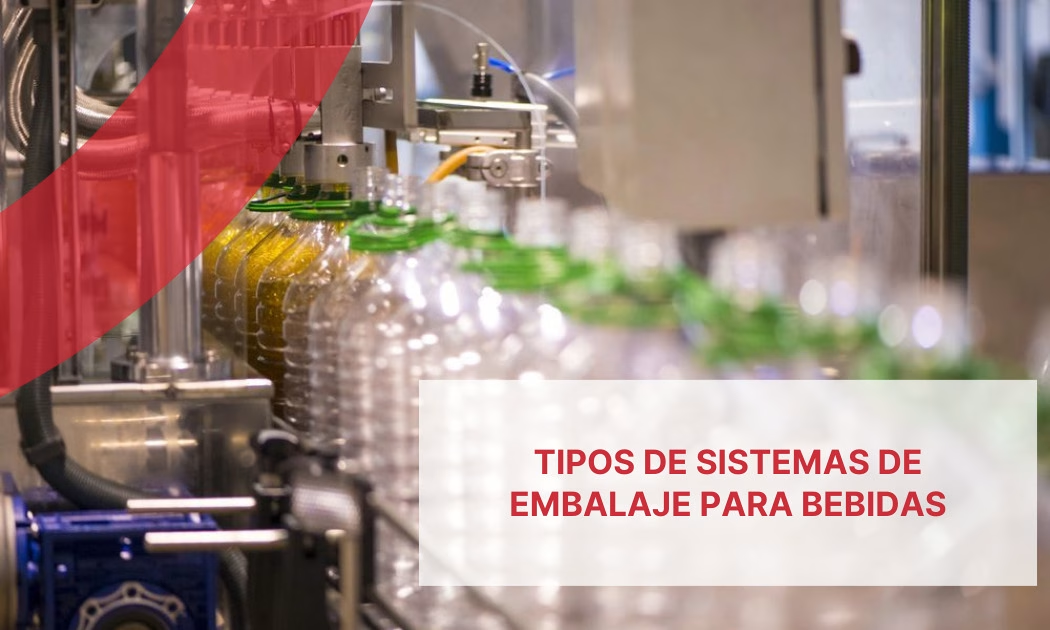Beverage packaging has specific characteristics based on volume and content. Here we outline the main types of packaging and systems.
Most Common Primary Packaging Materials for Beverages
Beverages come in various types, and depending on their characteristics, specific packaging is used. Although insulating them is essential, in some cases it is also important to ensure they are not exposed to the sun. Therefore, due to the texture of the liquid and for ecological reasons, there are different materials. These are the main options used in terms of materials:
- Cans
Cans are primarily used for soft drinks. Being opaque, they ensure good preservation of the beverage, and cardboard boxes are not required as secondary packaging, as plastic is often used. Cans offer portability and also generally take up less space than bottles. This is a relatively recent option, parallel to aluminum.
- Bottled Beverage Packaging
Bottles are one of the oldest packaging options in existence, but they have not lost their impact. Glass remains the mainstay for beverages such as wine and cider. In contrast, plastic is often used for soft drinks. In any case, bottles remain an attractive option because they offer better storage options than cans.
- Cartons
Cardboard has multiple possibilities, but it is most commonly used for juices and wine. Today, it is also generally biodegradable, minimizing the impact; this type of material can also be processed in several ways. Although tetra brick has been around for several decades, new options have become more widespread.
- Barrels
Finally, the barrel is a classic, originally made of wood, and despite the passage of time, it is still used on a small scale for beer and wine. Sometimes made of cardboard (bag-in-box), sometimes of aluminum, it is a solution for the individual consumer. For professionals, the dimensions of these primary packaging are larger.
The Main Packaging Systems for Beverages
We’ve already discussed primary packaging, but here we must discuss the system, which also encompasses secondary and tertiary packaging. There’s little point in properly covering a bottle or can if it’s at risk of breakage.
In the end, a packaging system isn’t just about storing the contents, but also about capping, classifying, and securing them. This last point, securing the load, is the most important for beverages. Not just any type of packaging will do, so it’s important to know the different options to choose the most appropriate one for your needs.
Consequently, and as with food, there are different packaging systems for beverages that overcome these difficulties. We can classify them as follows, from least to most beneficial for companies:
1. Manual Packaging System
This type of system is obsolete. And for this, it would be filled directly from the vat or barrel. It can only be used on very small production lines, where each bottle has a very high added value. It could be used, for example, in some high-end wines that sell this as added value, although this is becoming less so.
Outside the artisanal sector, manual packaging currently has little use because it is not competitive. It’s not surprising that it wastes a lot of time and doesn’t achieve a better result, so it’s on the decline.
2. Semi-Automatic Packaging System
Semi-automatic packaging systems are designed to handle irregular loads, combining human intervention with machinery. This is especially important for bottles, whether plastic or glass. A good option for a quick response is strapping machines. These machines can strap a load to prevent it from falling during transport.
It’s true that the worker must intervene, but the advantage is that the strapping will provide greater stability and secure hold of the load. Furthermore, for small businesses, it’s usually a good option if you have qualified workers who can perform the maneuvers because it’s less expensive. It’s worth noting that, as a small-scale solution, it usually works well; if you have a small budget and limited, one-off wrapping needs, it will work for you.
On the other hand, a strapping machine can’t handle a heavy workload as well. And it requires prior worker qualifications. We also can’t forget that the risk of workplace accidents is higher.
3. Automatic Packaging System
An automatic packaging system is one in which the worker doesn’t have to intervene during the process. They simply have to turn the machine on and off using specific software. This will help you gain competitiveness compared to other companies.
For an automatic beverage packaging system, the best solution is a pallet wrapper. This covers and secures each pallet with transparent film, providing stability and, in turn, protecting the load from dust and other impurities. In addition, automatic reel change systems are incorporated, minimizing downtime. Furthermore, the risk of workplace accidents is virtually eliminated. Finally, and this must also be said, the need for labor is reduced because the process is automated.
There are various beverage wrapping machines, depending on your company’s needs and the characteristics of the load. For example, the Saturn S8 model can wrap up to 160 pallets per hour, ideal for large production runs or high activity rates. An added advantage is that speeds can be varied, although they are still much higher than with other systems.
The only drawback of automatic beverage wrapping systems is that they require an upfront investment. And, although it may be somewhat costly in the short term, the increased productivity clearly offsets the expense.
Use automatic wrapping machines
Beverage packaging is best done with wrapping machines, as they guarantee better results in less time and avoid incidents. At Movitec, we have several models tailored to your company’s needs and offer all the guarantees of an international leader in the sector. Call us and we’ll inform you!
